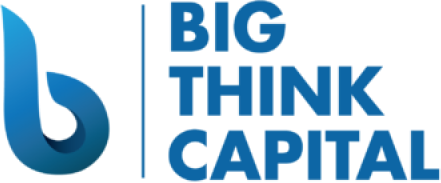Navigating New Interest Rates: Strategies Small Businesses Can Use to Manage Increasing Federal Rates in 2025
Estimated reading time: 5 minutes
- Understand the impact of rising interest rates on financing options.
- Evaluate your financing needs and reassess current debt.
- Foster strong relationships with lenders to secure better terms.
- Diversify funding sources to mitigate financial risks.
- Stay informed about economic trends and adapt your strategies accordingly.
Table of Contents
Understanding the Landscape of Rising Interest Rates
The Federal Reserve adjusts interest rates in response to various economic indicators, including inflation and employment rates. As of early 2025, rates have seen several increases over the past few years to curb inflation, which peaked at over seven percent in late 2023. These adjustments influence banks and alternative lenders, impacting the cost of borrowing for small businesses. According to the Federal Reserve Bank of St. Louis, small business loan rates have climbed nearly two percentage points since 2021, causing a ripple effect in financial planning for entrepreneurs (source: FRED).
While higher rates may seem daunting at first, they also present an opportunity for businesses willing to strategize effectively. Here are some practical steps business owners can take to manage increasing interest rates.
Strategies to Manage Rising Interest Rates
Reassess Your Financing Needs
The first step in responding to rising interest rates is to reassess how much financing you actually need. Consider the following:
- Evaluate Current Debt: Review your existing loans and credit lines to understand your overall financial health. Are you comfortably making payments, or are you stretched thin?
- Prioritize Essential Purchases: Determine which expenses can wait. Delay discretionary spending until financial conditions stabilize to avoid unnecessary debt.
- Focus On Cash Flow: Create a detailed cash flow forecast. Understanding your cash flow enables you to determine if you can sustain higher payments on new borrowing.
This assessment can clarify whether you need funding now or if you can afford to wait for potentially lower rates in the future.
Explore Fixed vs. Variable Rates
When seeking financing, the interest rate type can have long-term implications. In light of rising rates, consider the benefits and drawbacks of both fixed and variable rates:
- Fixed Rates: With fixed-rate loans, your interest rate remains constant throughout the loan term. This predictability can protect you from rising rates and help with budgeting. However, the initial rates tend to be higher.
- Variable Rates: These loans typically start with lower rates, but they can fluctuate over time based on market conditions. If you go this route, be prepared for potential rate hikes that could increase repayment costs.
Business owners should carefully evaluate their risk tolerance before making a decision. Factors like the business’s size, sector, and market conditions all play a role in whether to lock in a fixed rate or take a gamble on a variable option.
Build a Strong Relationship with Lenders
Establishing and nurturing relationships with lenders can provide invaluable support, especially in a high-rate environment. Here’s how to approach this:
- Keep Communication Open: Regularly update lenders on your business’s performance and financial needs. Transparency can lead to better terms and conditions.
- Demonstrate Reliability: Consistent, on-time payments improve your credit score and strengthen lender confidence in your business.
- Negotiate Terms: Don’t hesitate to discuss terms with your lender, especially if you’re looking to consolidate debt or refinance. A good relationship may lead to more favorable terms.
Becoming a trusted partner to lenders can make a big difference when seeking necessary funding.
Diversify Funding Sources
In a challenging interest rate environment, diversification is vital. Don’t rely solely on traditional bank loans. Here are alternative funding options worth considering:
- Merchant Cash Advances (MCA): Though this option typically comes with higher fees, it can provide quick cash without the traditional lengthy process, helping businesses keep liquidity during tough times.
- Equipment Financing: If your business relies on expensive equipment, consider financing or leasing rather than purchasing outright. This can spread costs over time without heavy upfront costs.
- SBA Loans: These government-backed loans often offer lower interest rates and longer repayment terms, making them a more feasible option for many small businesses.
By diversifying your financing approach, you can ensure that if one source becomes too costly, others remain viable.
Take Advantage of Grants and Subsidies
Look for available grants or subsidies that can lessen your financial burden. Federal, state, and local programs may offer financial assistance to businesses adapting to the higher interest rate environment. Here’s how you can tap into these resources:
- Research Opportunities: Websites like Grants.gov can help you identify federal grant programs that align with your business needs.
- Consult Local Business Development Centers: These centers are equipped to help small businesses find grant opportunities specific to your industry and locale.
- Network with Other Business Owners: Joining local business organizations can provide insights into grant opportunities and help build a support network.
Securing a grant can offer vital financial relief, particularly when borrowing comes at a premium.
Stay Informed and Agile
Finally, staying informed about economic trends and interest rate movements can position your business for success:
- Follow Economic Indicators: Keep an eye on economic reports, inflation data, and Fed announcements. This information can guide your financing strategy.
- Adjust Financial Plans: Continually update your financial strategies based on economic changes. Flexibility can be your greatest ally in shifting financial landscapes.
- Leverage Technology: Consider using financial software that can help analyze data, forecast needs, and manage payments more effectively.
Being proactive rather than reactive in your financial planning can lead to a more robust financial strategy that withstands changes in interest rates.
Conclusion
Rising interest rates can be challenging for small businesses, but with thoughtful strategies, you can navigate the landscape effectively. By reassessing your financing needs, understanding the types of loans available, fostering strong lender relationships, diversifying funding sources, leveraging grants, and staying informed, you can mitigate the impact of increased borrowing costs.
Remember, at Big Think Capital, our team of experts is here to assist you in exploring the best financing options tailored to your business needs. Whether you are considering a working capital advance, an SBA loan, or equipment financing, we can help you navigate the complexities of the lending landscape.
Take charge of your business’s financial future today. To learn more or to speak with one of our funding experts, visit us at bigthinkcapital.com. Your success is our priority, and we look forward to helping you secure the funding you need to thrive in 2025 and beyond.
FAQ
- What should I do if I can’t manage my debt payments during high-interest periods?
- Consider contacting your lenders to discuss payment options or seek financial advice from professionals.
- Are there specific grants for small businesses?
- Yes, many federal, state, and local programs offer grants for small businesses. Research opportunities on sites like Grants.gov.
- How can I improve my credit score to secure better loan terms?
- Pay your bills on time, reduce existing debt, and avoid taking on new loans unnecessarily.






